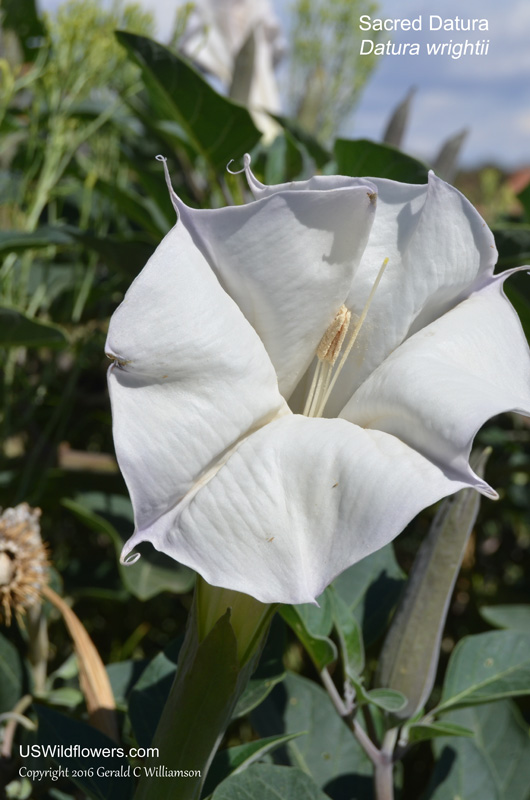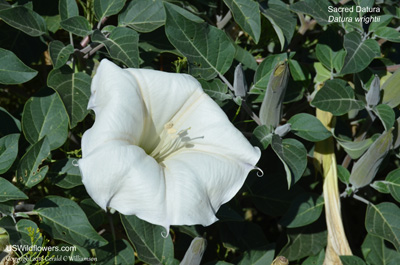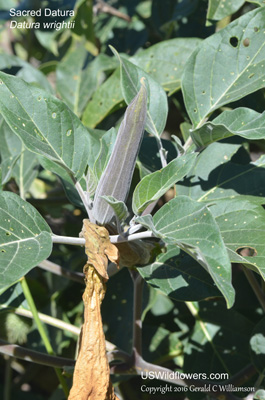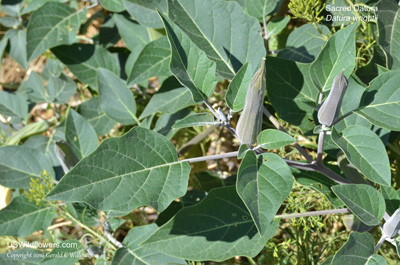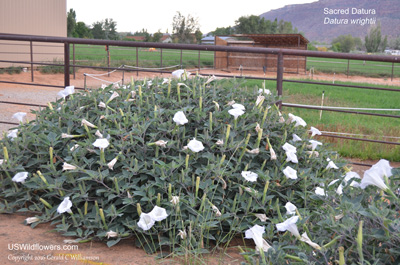Wildflowers of the United States | |||||||||||||
| |||||||||||||
Datura wrightii - Sacred Datura, Sacred Thorn-apple, Indian Apple, Angel Trumpet. The Datura genus scientific name has its origin in the word 'dhattura' - the Sanskrit word for 'white thorn-apple.' Thorn-apple is a reference to the prickly-spined fruit, and is one of the common names for the genus. The common name most commonly used in the United States for the genus is 'Jimsonweed' (which is also the most commonly used common name for the most widespread species in the genus, Datura stramonium). That common name is derived from the name of the first English settlement in North America, Jamestown, Virginia and originated because British soldiers were drugged with it near the town in 1676 by local farmers during Bacon's Rebellion, an inauspicious page in North American history.
| Datura wrightii, Sacred Datura, is fairly widely distributed in North America, although its distribution out of its presumed native range - Mexico and the southwestern United States - is pretty scattered. It prefers well-drained soils of flood plains, blooming in late summer and early fall. Sacred Datura is a poisonous plant - it can be deadly. Parts of it are hallucinogenic, and as such it was (and possibly still is) used in Native American religious rites and continues to be used, sometimes with deadly results, by people seeking an hallucinogenic "trip". Found in: AL, AR, AZ, CA, CO, CT, FL, ID, IL, IN, KS, KY, MA, MD, ME, MI, MN, MO, NC, NE, NH, NJ, NM, NV, NY, OH, OK, PA, RI, SC, TX, UT, VA, WV, WY Leave comments on Datura wrightii at this link.   Map courtesy of The Biota of North America Program. Map color key Search Our Database: Enter any portion of the Scientific, Common Name, or both. Do a general Google search of the entire site: #ad #ad
| #ad
| | ||||||||||
|
Commercial / Cookie Notice Looking for Wildflowers for a specific state? Check here: | |||||||||||||
|
All content except USDA Plants Database map Copyright Gerald C. Williamson 2025 | |||||||||||||
Code Update 20230302

